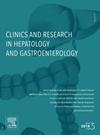Anal incontinence in adults under 65 years: A survey based on social networks
IF 2.4
4区 医学
Q2 GASTROENTEROLOGY & HEPATOLOGY
Clinics and research in hepatology and gastroenterology
Pub Date : 2025-03-21
DOI:10.1016/j.clinre.2025.102577
引用次数: 0
Abstract
Introduction
The frequency of anal incontinence in the general population is likely an underestimation, particularly among adults ≤65 years, for whom personal and professional considerations limit their utilization of medical care. The objective of this study was to assess the prevalence of anal incontinence in the young population and to address the reasons why such individuals do not seek care.
Methods
This was a public health survey conducted using personal and professional social networks between April and November 2023. Participants between the ages of 18 and 65 were invited to respond a survey about their experience of anal incontinence (AI). The survey collected data on the Vaizey's score and the Anal Incontinence Quality of Life Index (FIQL).
Results
Of the 481 individuals who completed the survey, 176 (36.6 %) reported experiencing AI. The majority of respondents exhibited mild incontinence (46 %), while 15.8 % experienced severe or major AI. Among those with AI, only 27.3 % consulted a physician, and in nearly 40 % of cases, no treatment was proposed. The primary reasons for not seeking consultation were embarrassment about the condition (63 %) and perceived stigma surrounding treatment (28 %), including a lack of awareness about available treatments. Multivariate analysis revealed that individuals between the ages of 26 and 45 were more likely to seek medical attention.
Conclusion
The prevalence of incontinence of the anal nature among young adults remains significantly underestimated, despite its impact on their quality of life. Enhanced public health communication regarding the management of incontinence, particularly among young individuals and healthcare providers, is imperative.
65岁以下成人肛门失禁:一项基于社交网络的调查
一般人群中肛门失禁的频率可能被低估了,特别是在≤65岁的成年人中,个人和专业考虑限制了他们对医疗保健的利用。本研究的目的是评估肛门失禁在年轻人中的患病率,并解决这些人不寻求护理的原因。方法于2023年4月至11月利用个人和职业社交网络进行公共卫生调查。年龄在18到65岁之间的参与者被邀请回答一项关于他们肛门失禁(AI)经历的调查。该调查收集了Vaizey评分和肛门失禁生活质量指数(FIQL)的数据。在完成调查的481人中,176人(36.6%)报告经历过人工智能。大多数受访者表现出轻度失禁(46%),而15.8%的人经历了严重或严重的AI。在患有人工智能的人中,只有27.3%的人咨询了医生,近40%的病例没有提出任何治疗方案。不寻求咨询的主要原因是对病情感到尴尬(63%)和对治疗感到耻辱(28%),包括对现有治疗方法缺乏认识。多变量分析显示,年龄在26岁至45岁之间的人更有可能寻求医疗照顾。结论尽管肛门失禁对年轻人的生活质量有影响,但其患病率仍被严重低估。加强关于失禁管理的公共卫生交流,特别是在年轻人和医疗保健提供者之间,是必不可少的。
本文章由计算机程序翻译,如有差异,请以英文原文为准。
求助全文
约1分钟内获得全文
求助全文
来源期刊

Clinics and research in hepatology and gastroenterology
GASTROENTEROLOGY & HEPATOLOGY-
CiteScore
4.30
自引率
3.70%
发文量
198
审稿时长
42 days
期刊介绍:
Clinics and Research in Hepatology and Gastroenterology publishes high-quality original research papers in the field of hepatology and gastroenterology. The editors put the accent on rapid communication of new research and clinical developments and so called "hot topic" issues. Following a clear Editorial line, besides original articles and case reports, each issue features editorials, commentaries and reviews. The journal encourages research and discussion between all those involved in the specialty on an international level. All articles are peer reviewed by international experts, the articles in press are online and indexed in the international databases (Current Contents, Pubmed, Scopus, Science Direct).
Clinics and Research in Hepatology and Gastroenterology is a subscription journal (with optional open access), which allows you to publish your research without any cost to you (unless you proactively chose the open access option). Your article will be available to all researchers around the globe whose institution has a subscription to the journal.
 求助内容:
求助内容: 应助结果提醒方式:
应助结果提醒方式:


